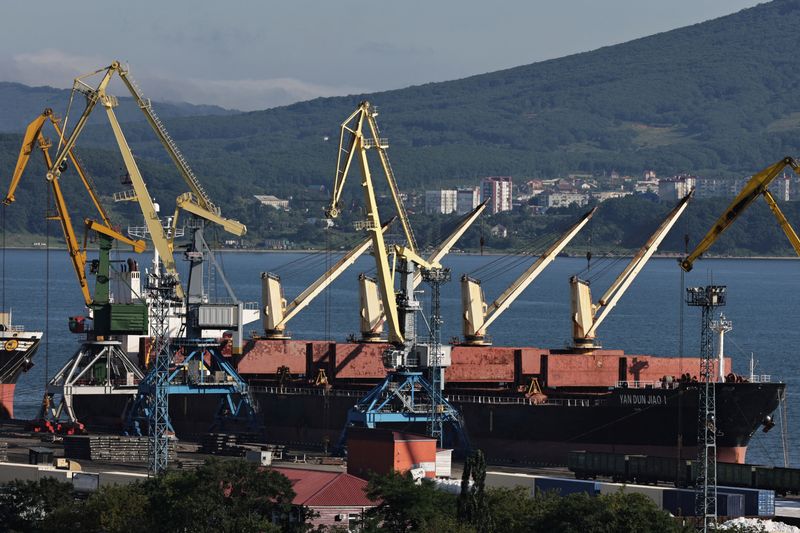By Erwin Seba
HOUSTON (Reuters) -Oil futures ended largely unchanged on Monday as a ceasefire agreement between Hamas and Israel continued to elude negotiators.
Both crude oil benchmarks settled 37 cents, or 0.5%, higher with Brent crude futures at $83.33 a barrel and U.S. West Texas Intermediate crude futures (WTI) at $78.48 a barrel.
Last week, both contracts posted their steepest weekly loss in three months, with Brent falling more than 7% and WTI down 6.8%, as investors weighed weak U.S. jobs data and the possible timing of a Federal Reserve interest rate cut.
Throughout trading on Monday, global benchmark Brent climbed and then retreated on prospects for a ceasefire, reaching a high of $83.83 and a low of $82.77.
"(A possible agreement) took some air out of the oil market," said Andrew Lipow, president of Lipow Oil Associates. "Any ceasefire agreement would lessen the tension in the Middle East.
A Israeli official said the ceasefire proposal from Egypt that Hamas accepted had some far-reaching aspects that were unacceptable.
Hamas has demanded for an end to the war in exchange for the freeing of hostages and Israel appeared poised to launch a long-threatened assault in the southern Gaza Strip.
"Markets are a little jaded about geopolitical risk from the war," said John Kilduff, partner with Again Capital. "I think you're going to have to see more kinetic activity to move the markets."
Also supporting oil was Saudi Arabia's move to raise the official selling prices for its crude sold to Asia, Northwest Europe and the Mediterranean in June, signalling expectations of strong demand this summer.

Lipow said he expects the Organization of the Petroleum Exporting Countries and its allies (OPEC+) will announce at meetings in June plans to continue production cuts in the third quarter.
In China, the world's largest crude importer, services activity remained in expansionary territory for the 16th straight month, while growth in new orders accelerated and business sentiment rose solidly, boosting hopes of a sustained economic recovery.